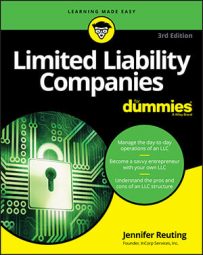All S corporations start out as regular corporations. An S corporation is formed only when a regular corporation elects a special small-business tax status with the IRS. This is done by filing an S Election, Form 2553, with the IRS within a few months of the corporation’s formation.
Obtaining pass-through taxation, corporation style
S corporation tax status is a pass-through tax status. Like sole proprietorship or partnership taxation, the revenues and expenses of the business “pass through” to the shareholders’ individual tax returns.
The similarities end there, however. S corporation tax status requires that the business file its own tax return, the 1120S (instead of the Form 1120 return that regular corporations are required to file); however, the company is still required to issue K-1s to the shareholders as it would if it were a partnership.
The main difference between S corporation taxation and that of other entities is that the owners/shareholders can be employed by the business, paying themselves a salary that is subject to the same sort of payroll taxes deducted from all paychecks.
If you’ve been paying attention, you’re probably wondering what the big deal is — after all, self-employment tax is equal to the Social Security and Medicare tax that gets deducted for each employee. So where are the savings?
Here’s the kicker: Any profit allocated to the shareholders above and beyond the “reasonable salary” they’ve already paid themselves is not subject to the 15.3 percent self-employment tax. If your business generates more than the salary you pay yourself, the resulting savings can be substantial.
What constitutes a “reasonable salary” in the eyes of the IRS? Well, the amount isn’t really set in stone, but if you were ever audited, the IRS would want to make sure that it is consistent with the standard for a professional in your industry with your job title and responsibilities.
Complicating matters with IRS restrictions
The IRS seems to live by the maxim that all roses have thorns, and if a rose doesn’t have thorns, then gosh darn it, they’ll give it some! So the IRS gave the S corporation ownership restrictions. Lots of them. If your corporation (or even your LLC) has elected S corporation tax status, then you are required to abide by a few little rules:
Your corporation must not have more than 100 shareholders.
Shareholders can consist of only natural persons, individual trusts (for estate planning purposes), and tax-exempt nonprofit organizations. This specifically excludes any other entity or business structure, such as a limited liability company or corporation.
Shareholders must be citizens or resident aliens of the United States.
The corporation is allowed to issue only one class of stock.
Banks and insurance companies are barred from being shareholders.
All shareholders must unanimously consent to the S corporation tax designation. In other words, a majority vote won’t do the trick.
If you’re truly a small business, then an S corporation may suit you. Just make sure that you intend to stay small for the time being, because when you elect to be an S corporation, you’re stuck with the decision for five years. (Don’t even think about going public or raising institutional capital!) At least that much time needs to pass before the IRS will allow you to make another tax election.

